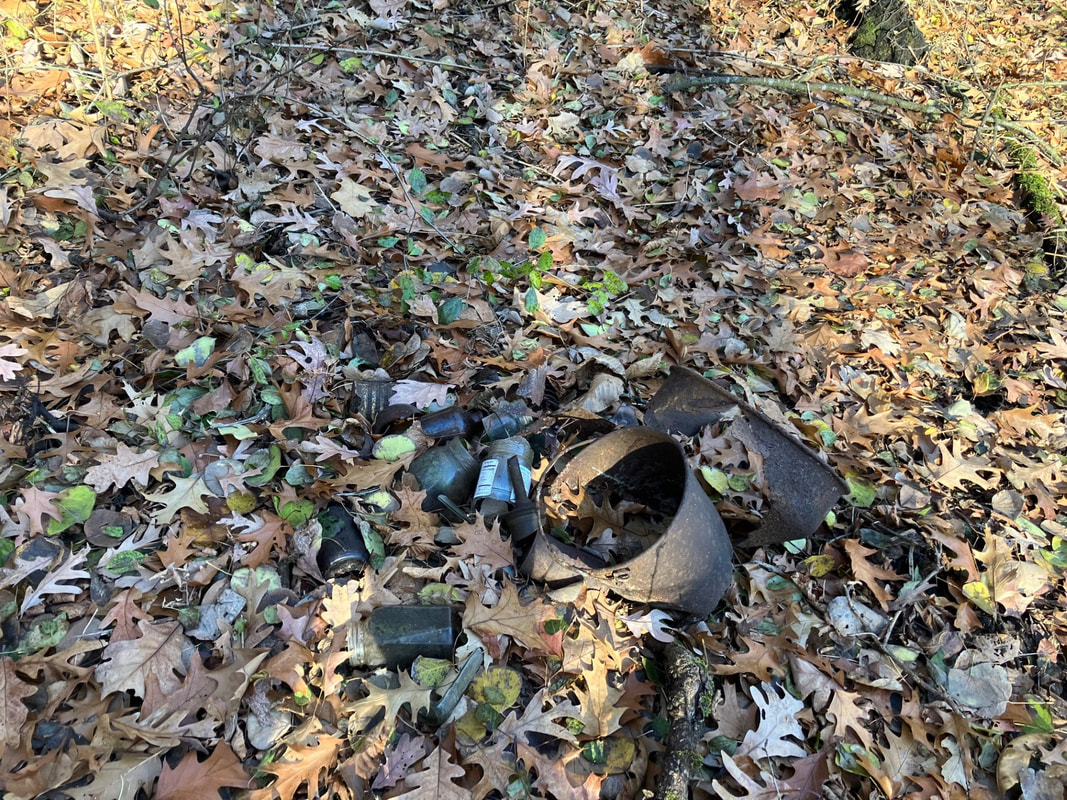
The term “trash history” is literal, not figurative. As I slashed, yanked, pulled and piled the various bushes and small trees, history was unearthed as well.
An overturned stump held a broken glass bottle nestled in its root system. Underneath a pile of leaves, the front bumper of a car emerged. Stuck in the dirt was the top of an old, rusted paint can, which slowly emerged with digging, and partially crumbled in my hands during the process.
A small local dump on our property. Oh, joy. How long had these artifacts slept there? The answer to that question slowly emerged with each new discovery.
First to test my personal knowledge based on my lifespan was a pop-top beer can. The style told me everything. It was from the 1960s.
Next was a beer bottle. The style gave it away. Again, from the 1960s. Probably was a Schlitz, but the label had disappeared.
The level of decomposition was another telling factor. I’m no archeologist. At the same time, when you see the rusted remnants of a cooking pot and look at the other refuse, you put two and two together to come up with your prediction on how long ago someone decided to let their crap fly.
How long does it take glass to decompose? How about an aluminum can or a cooking skillet? Plastic jar? Barbed wire? A discarded tire? Clearly, none of them in 50+ years, which is pretty scary. All of these items were intact in the scattered rubbish.
Carbon dating is a scientific method that can accurately determine the age of organic materials as old as approximately 60,000 years. I didn’t need that to help recognize the leftovers from my own personal life.
Do people think about decomposition when they toss their refuse in the woods? Highly unlikely. In the 1960s, as is often still the case today in 2023, too many people don’t care what they throw in the woods or out the car window. Sadly, the world is their dump.
We grew up on a dead-end street in northern New Jersey. There was a dump at the end of our street. Random cars and trucks would stop and throw old television sets, toilets, tree limbs, leaves, lumber, shingles, and who the heck knows what else into the ever-burgeoning pile. I wonder now if those materials are buried, have been removed or still sit on the surface providing a certain historical perspective of those years.
We played in that dump, never thinking twice about smashing things, throwing something over the ledge. The trash depositors created a new world for us kids.
Future generations might unearth artifacts from that dump in the years ahead. What will they find? If it’s similar to the junk I’ve found during my buckthorn destruction, the throw-aways will tell a story, like most things left behind.